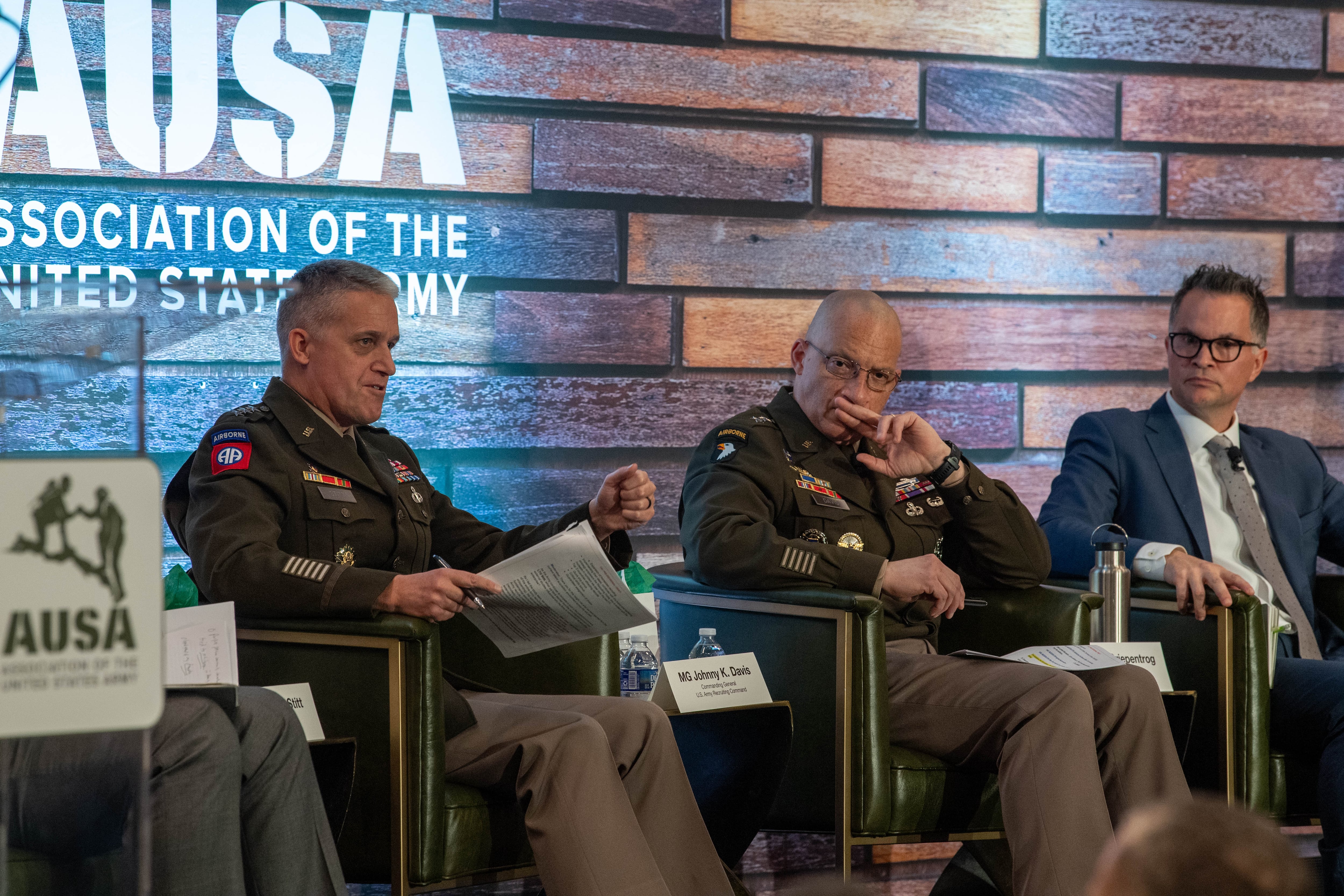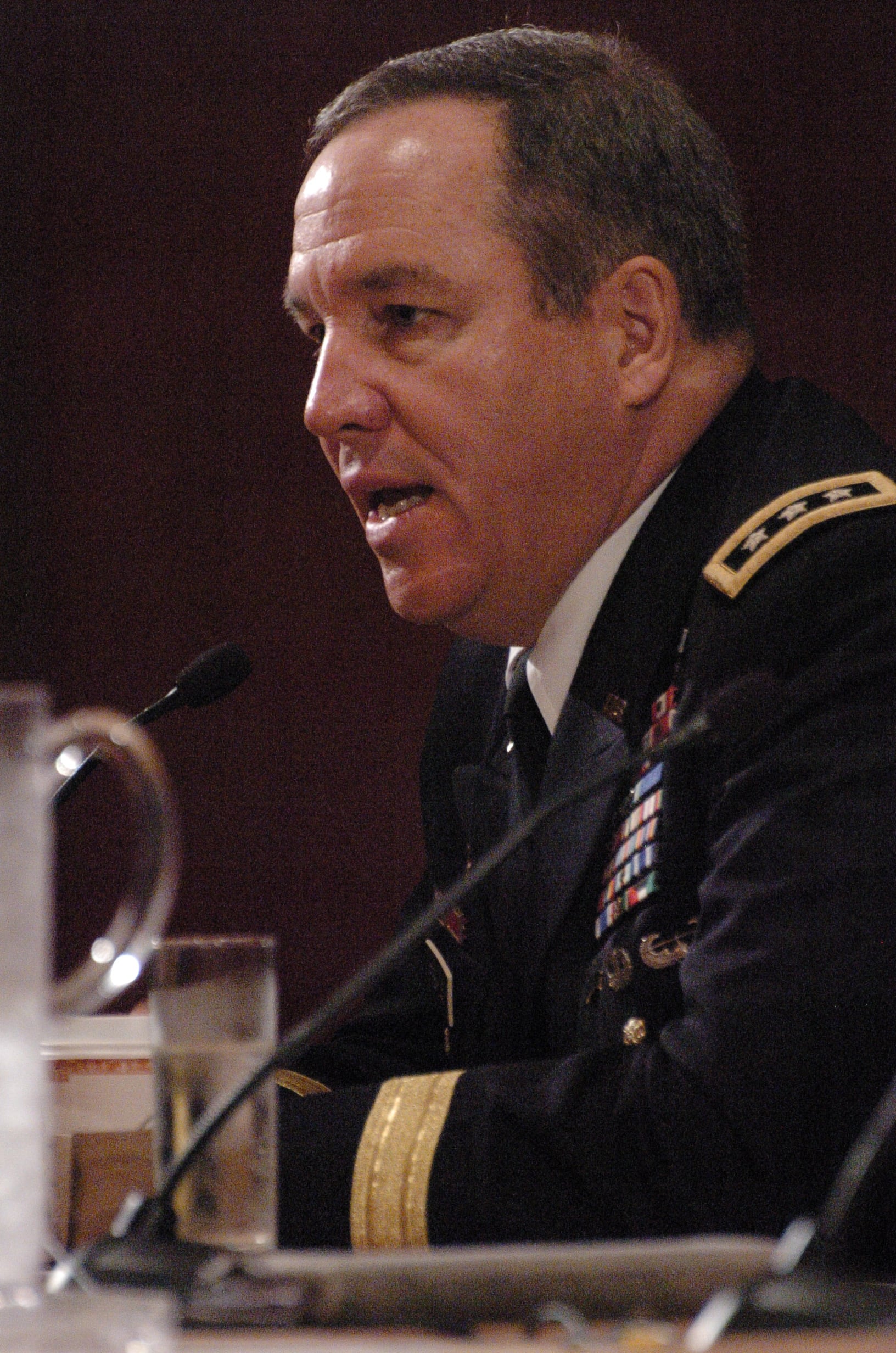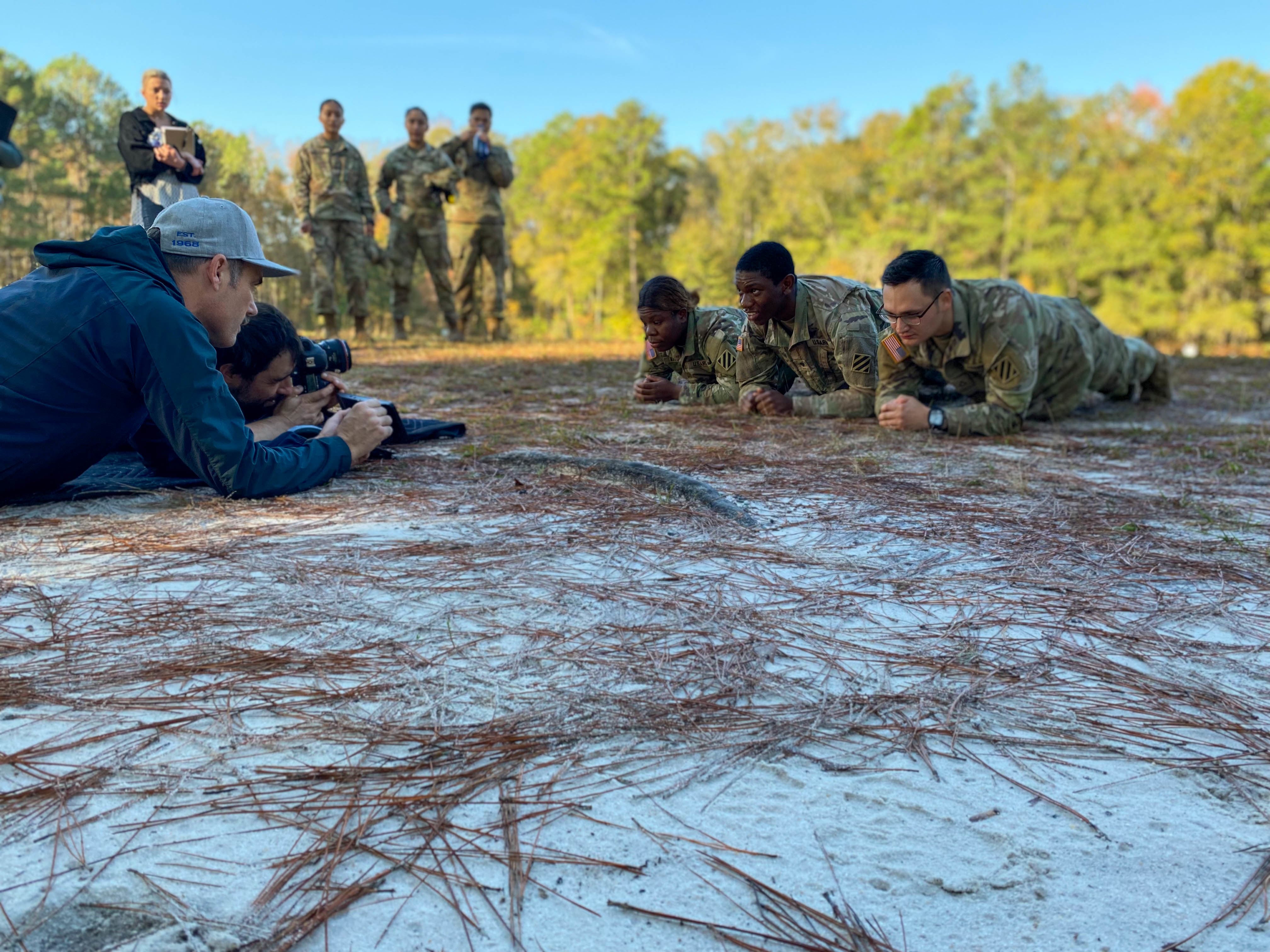When Congress grilled the Army’s top personnel officer last year about the recruiting crisis, he said that the service planned to tear its hiring enterprise “down to the studs and see what’s out there.” But he may not have known that part of the answer would come from recent history.
Months later, Army Secretary Christine Wormuth tapped that same officer, Lt. Gen. Doug Stitt, to lead a months-long “clean slate” study — if nothing were assumed, how would the Army structure its recruiting and marketing apparatus? Stitt’s team, armed with a reform mandate fueled by an “existential” recruiting crisis, came back with a sweeping array of recommended changes that service leaders largely adopted.
One aspect stood out: a series of organizational moves will likely refashion Recruiting Command into an entity that strongly resembles Accessions Command, a three-star headquarters dismantled in 2012 in order to balance the books amid budget cuts and economic woes.
After Accessions Command shut down, its components were scattered to the winds. Marketing was reorganized and fell under Army Manpower & Reserve Affairs, a Pentagon-based policy organization; Recruiting Command and Cadet Command reported to Training and Doctrine Command. The Army’s reforms will reunite the three functions — enlisted recruiting, officer recruiting and development, and marketing — under a more powerful Recruiting Command to be led by a three-star general who will report directly to the Army secretary.
Why are some hallmarks of Accessions Command’s structure returning? Army leaders have dodged the question. So, Army Times reviewed historical documents and spoke with former Accessions Command figures and Army marketing officials in order to explore why Accessions Command got the axe and why the Army seemingly found value in reincarnating a once-abandoned structure.
The answers may be obvious: the budget-focused demise of Accessions Command was shortly followed by recruiting’s terminal decline. The Army’s recruiters have not met their contract quotas since 2014, instead meeting basic training enrollment goals by gradually sucking dry the deep pool of delayed entry contracts they inherited from Accessions Command.
“This is ‘back to the future’ and that’s a good thing,” said Bruce Jasurda, the defunct command’s chief marketing officer from 2009 to 2012. “The Army is returning to a proven model.”
Every person interviewed by Army Times for this article said that the reorganization could unlock a higher level of synchronization between enlisted recruiting, officer recruiting and marketing. But some identified possible points of risk — without dedicated marketing expertise in the command’s headquarters or the right mix of decision-making power and resources, they argued, the sweeping reforms may fall short of their potential.
Army officials are hesitant thus far to divulge what they learned from Accessions Command throughout the summer-long reform study group that Wormuth chartered, perhaps because it would mean acknowledging its demise was a mistake.
“This is not about revisiting the past,” Stitt said in response to an Army Times question at an Oct. 9 panel discussion. Instead, he argued, the group focused more on what authorities, resources and structure Recruiting Command would need moving forward. Co-panelist Maj. Gen. Johnny Davis, who leads USAREC, echoed Stitt’s sentiment.

Some observers — like retired Lt. Gen. Benjamin Freakley, the top officer of Accessions Command from 2007 until he retired at its January 2012 inactivation ceremony — expressed guarded optimism. Stitt’s study group contacted him and Jasurda over the summer.
“I believe the Army will fix this and will be stronger for it,” Freakley told Army Times, so long as the service has “the gumption” to be truly introspective.
But doing so may be a challenge for an Army whose own experts say that its organizations and leaders are incentivized to feign perfection or create an illusion of never-ending progress, whereby countless corners are turned.
Savings, but at what cost?
When the Defense Department announced in April 2011 that Accessions Command was on the chopping block, the Pentagon press release claimed the move would “streamline the Army’s accessioning process and produce savings by de-layering the command structure without increasing the risk to the Army.” The announcement celebrated the number of jobs the move cut, and an annual management report later said the Army “saved an estimated $764 million by restructuring its recruiting and retention efforts.”
Yet when the axe fell, the headquarters was succeeding in its mission to woo prospects, sign them to contracts and ship them to training. Every fiscal year, Army recruiters receive a contract mission (one larger than the annual “accessions mission” that tracks those who ship to basic training) in order to fill the Delayed Entry Pool with signed troops awaiting training.
That’s where Accessions Command stood out, Jasurda said.
In addition to meeting its accessions mission — the number of new soldiers that the Army wanted to send to training — in its final two fiscal years of existence, Accessions Command also capitalized on flagging economic conditions and had 58% of the fiscal 2012 recruitment goal already signed to delayed entry contracts.
That success quickly dissipated after the command shuttered.
Army leaders knew something was wrong. Then-Maj. Gen. Thomas Seamands, a personnel officer who retired as a three-star, told Congress in 2014 that an ongoing decline in the delayed entry pool was “a canary in the coal mine ... warning about a tough environment ahead.”
The Army has failed to achieve the contract mission in every fiscal year since 2014, according to documents reviewed by Army Times, and that forced the service to gradually drain its delayed entry pool to meet annual entry quotas. As new recruits’ average wait time decreased, so did Recruiting Command’s ability to keep relying on the pool, because the service could not refill it quickly enough.
The pool, which had over 30,000 recruits on the eve of fiscal 2012, now numbers around 4,600, or 7.3% of its fiscal 2024 target to access 62,600 enlistees. Even during the War on Terror troop surges that massively increased the Army’s size amid recruiting struggles, the pool never dropped below a pre-fiscal 2008 nadir of 8%, then described as “the smallest ever [delayed entry pool].”
Freakley, the former Accessions Command leader, told Army Times that much of the command’s success stemmed from its unified control of organizations and resources — marketing in particular. The three-star general’s headquarters also served as the executive agent overseeing Military Entrance Processing Command.

“[The Army] basically walked away from a fundamental principle of unity of command and unity of effort,” Freakley said. “They’re trying to bring unity of command and unity of effort back. Will it be effective? It depends.”
Jasurda, the former top marketer, emphasized that marketing was a “huge part” of their recruiting success. He pointed to now-defunct efforts to harness then-cutting-edge technologies such as Army Strong Stories, a blogging platform where troops could diary their experiences in their particular career field for prospective troops, and online live chats with deployed soldiers.
But in the Army’s successor organizations, “marketing was detached from the sales function,” Jasurda observed. “We pulled apart the parts that made Accessions Command successful…and I hope that’s something that the new Recruiting Command structure is addressing.”
More than lines on an org chart
In the years since Accessions Command shut down, the Army’s marketing apparatus struggled. The Pentagon-based Army Marketing and Research Group was abolished in 2019. Its reign ended after a scandalous affair between a senior Army marketer and an executive from their advertising agency partner, as well as a watchdog report that found it couldn’t link its spending to results.
The current Army Enterprise Marketing Office arose from its predecessor’s ashes in 2019, under now-retired Maj. Gen. Alex Fink, an Army Reserve officer with deep civilian marketing experience. Fink spoke with Army Times via phone.
RELATED

Fink said he inherited a “difficult relationship” between the Army’s marketers and Recruiting Command, and said “one of my [first] priorities was to repair that relationship — and it didn’t happen overnight.” He pointed to the launch of the renewed “Be all you can be” brand as an example of successful collaboration between the two offices that harnessed his team’s new data and analytics capacity.
Two officers from Fink’s former office also spoke with Army Times for this story. They asked their names remain unpublished so they could speak frankly (and without authorization) about the marketing office’s relationship with recruiting and about the potential benefits and risks of subordinating it to Recruiting Command.

The two officers said that such collaboration happens regularly, but sometimes it isn’t smooth.
“USAREC could make requests [to the marketing office] that were pretty in the weeds,” said one marketing officer, who said the conversation sometimes glossed over “the big objectives or goals [of the action] were.” But he also freely confessed that the office “an be accused — maybe rightfully — of some ivory tower marketing.”
The second officer said “organizational friction” between the two offices inevitably occurred because they answered to different bosses. “We’re in two different headquarters, with two different bosses who might have been given two different sets of priorities or even objectives,” the second officer explained, adding that sometimes USAREC’s requests didn’t “seem all that important” to AEMO and vice versa.
The first officer said one such instance came when Recruiting Command requested a website made specifically for recruiting women just “because the Navy had one.”
Yet both officers — and the former accessions and marketing leaders — all professed optimism for the reorganization.
“If the commanding general of USAREC and the commanding general of Cadet Command have the responsibility to build the Army, they need the authorities to help shape the messaging to meet their mission,” Freakley said. He likened the divorce of recruiting and marketing to launching infantry assaults without artillery support.
Jasurda, the Accessions Command-era top marketer, used a similar metaphor. “Rolling the Army Enterprise Marketing Office under Recruiting Command now affords the command the ability to shift and lift the assets…within the marketing arm to where the Army’s greatest needs are in recruiting,” he said.
Former marketing office chief Fink argued the realignment would cement the improved relationship and pay long-term planning dividends. He also noted that making USAREC “own” marketing “is also going to force them to become much more engaged” with it on a regular basis, and it could provide an opportunity to streamline career development for marketing officers through recruiting leadership assignments.
Words of warning
But the two marketing officers who spoke with Army Times also voiced concern over the new direction, with one arguing that the realignment will ensure “both organizations are on the same page,” before noting that its success ultimately depends on “if it’s the right page.” The second officer stressed that Recruiting Command’s future leaders will only be as good as their teams, and the feedback they’re given. He said the Army urgently needs to determine where its data-driven marketing analytics and strategic planning firepower belongs on the new Recruiting Command organizational chart, or else the realignment could flop.
The former Accessions Command head, Freakley, encouraged the service to consider adding a civilian chief marketing officer to Recruiting Command headquarters to oversee the marketing office and provide counsel to the commander.
Freakley also argued that the reforms’ ultimate success will depend on how much autonomy the new-look Recruiting Command will receive to execute its transformation.
The retired three-star cited “confusion in the past” between Pentagon policy organizations and operational organizations about the matter. When policy-first organizations oversee operational efforts like recruiting, he explained, policy organizations’ bureaucratic inclination to overanalyze decisions risks hamstringing the command when decisive action is needed.
“The recruiting community in general has responsibility and authority to recruit the force,” Freakley said. “[But] does [the commander] control the resources? Does he control the marketing and advertising? Does he control the number of recruiters in the field? Does he control the authorities over the funding from marketing and advertising to bonuses for potential recruits?” Those questions aren’t answered yet.
Sometimes, he concluded, “they need to let the operational forces do their job.”
Davis Winkie covers the Army for Military Times. He studied history at Vanderbilt and UNC-Chapel Hill, and served five years in the Army Guard. His investigations earned the Society of Professional Journalists' 2023 Sunshine Award and consecutive Military Reporters and Editors honors, among others. Davis was also a 2022 Livingston Awards finalist.




